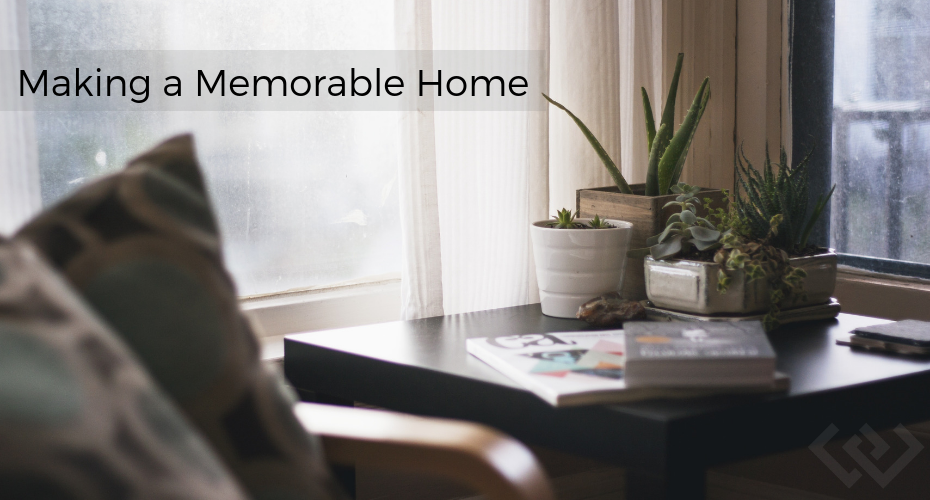Making a Memorable Home

Making a Memorable Home
Fresh out of college she had little desire to decorate or apply much effort to her home. She figured, “if it’s not functional, it’s not needed.” That all changed when her best friend, a former beauty queen, moved in with her. “Everything was moved! Books were realigned to look nice, plants popped up everywhere, and anything that didn’t look pretty found a discrete new home.” Although the first shock of everything shifting around her was a bit startling, she started to notice a big difference. “All of a sudden the people entering her home would look around and almost immediately compliment her on her ‘Pinterest’ home. She would overhear conversations about how great visiting her house was and when people did visit, they wanted to stay.”
This was the story of one of our agents and her journey in learning the power and positive impact that decorating can have on a home. We’ve all been at the start of this journey at one point or another. Fearful of making mistakes, we settle for what we have or even convince ourselves we like it better without the fancy decorations (even though we drool at Pottery Barn). Decorating can play a key role in turning that house you bought into a real home. It can transform plain space into a memorable oasis for all who enter.
In everyday life this is important but when selling a home, it is invaluable.
To ease your fears we’ve gathered some key interior design tips we hope will help you with your first steps to a new interior design.
5 Rules for Interior Design
-
Start with a Neutral Palette
Bright colors and bold accents go in and out of style rapidly. Neutrals are lasting and timeless. Start your room off with a neutral palette that will be consistent and lasting. Pops of color are easily achieved in replicable items such as books, floral arraignments, and accessories.
-
The 10-30-60 Rule
An easy way to decide when and where color should be added is using the 10-30-60 color rule for dominant, secondary, and accent colors. As the name suggests; your dominant color (a neutral) should cover about 60% of the room. Your secondary color, a little bolder, should be used repetitively without overpowering. Your boldest color, the accent, should be included sparingly and with intentionality.
-
Think Vertically
Artwork, wall décor, and tall plants help to bring the eye up off the ground or coffee table. Also, storing items vertically on shelves or other creative options keeps them off the ground or on low areas, preventing the home from feeling cluttered.
-
The Rule of Threes
Styling surfaces can feel intimidating. Too few items can leave the space feeling sparse and awkward, but too many items can cause clutter. When in doubt, follow the rule of three. Odd number groupings are more appealing to the eye than even ones. Placing three cohesive items in a space can help to create this dynamic.
-
Don’t Over-Theme
Everyone loves a good beach themed room but when everything is covered in is shells, sand, umbrellas, and flip flops it can start to look ridiculous. Keeps obvious references to a theme at a minimum with accent pieces and try to enhance the feel of the room over the theme.
Looking for some inspiration or a creative piece to get you started? Visit Seaside & Sylvan! They are a small furnishing boutique located at the historic Greenbank Farm. Their creative décor and helpful associates are sure to spark your style into action.
You might also like:

 Facebook
Facebook
 X
X
 Pinterest
Pinterest
 Copy Link
Copy Link




